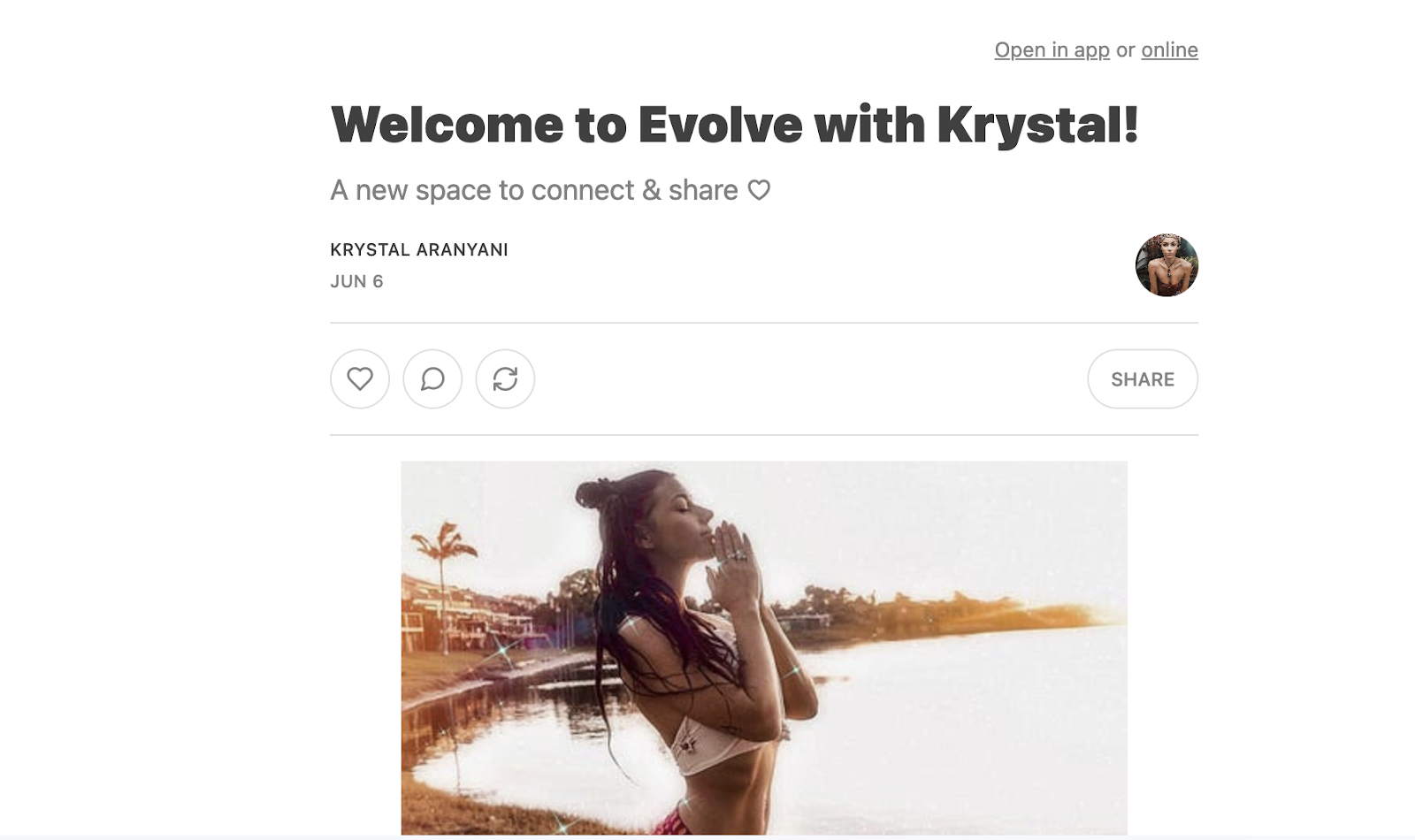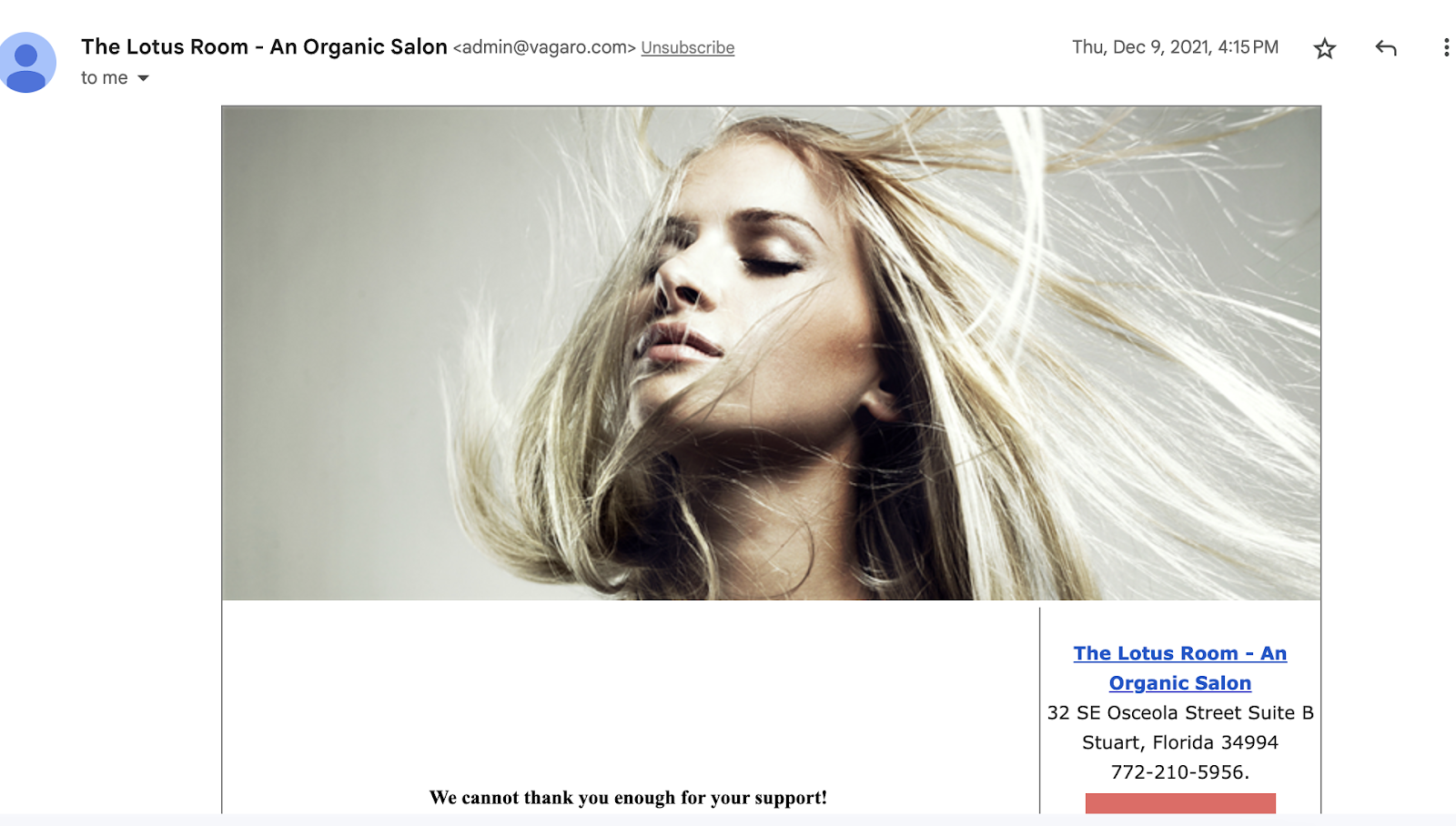Hello! Welcome to this blog post!

While I wouldn’t necessarily recommend starting an email (or most blog posts) like this, that’s what you’re here to learn. From the beginning to the end, this guide is everything you’ll need to know about how to write a welcome email.
As someone who’s worked as a communications director for nonprofits, governmental agencies, and small businesses, I spend less time crafting messages destined for the inbox and more time teaching people how to write their own email welcome series. Although many business owners I work with feel overwhelmed by the prospect of doing it themselves, I’m here to encourage you — it’s easier than you think.
Before we begin crafting the best welcome emails, I ask you to take a deep breath and consider your reality: You have a potential customer who has voluntarily given you an email address. This means they are asking you to send them an email. It’s not going to bother them at all. In fact, they are waiting for you to connect with them. Huzzah!
Once you recognize that emails sent by your business are going to willing recipients, you can think of the welcome email as the start of a new friendship. After all, the biggest benefit of email is the ability to strengthen relationships and provide opportunities for prospects to become loyal customers.
What is a welcome email?
A welcome email is the first email sent to someone who has asked to receive more information from you via email. And, it starts a strategic process of bringing prospective customers into a journey cycle that builds customer loyalty and boosts your sales — or donations. While this direct message in people’s inboxes is just a start, it’s a significant opportunity for your brand to make a great first impression.
Welcoming emails should be sent automatically from your email marketing platform immediately after someone signs up as a subscriber of your email list. It is usually the first of a welcome email series that includes one or two more automated messages created around the theme of introduction.
These emails can be as straightforward or as complex as you want. What’s most important as you figure out how to do email marketing is that you need to send something.
How to write a welcome email
Every business and brand, not to mention industry and niche, will offer a different look and feel for their welcome email. An excellent place to begin is to browse the different welcome email templates available through your email marketing platform.
These templates are just one way that services like Constant Contact are worth your consideration, as your message will be well-designed and show up clearly on all devices — which can’t necessarily be said for traditional email addresses like Gmail or Microsoft Outlook.
Once you’ve picked a welcome email template that will resonate with your target audience, it’s time to begin writing your first piece of email content.
1. Write a warm, welcoming email subject line
While it’s only a short phrase, your welcome email’s subject line consists of the most important words of the entire message. It’s the first thing everyone sees and will be the main factor in the recipient deciding whether to open it.

Creating the best subject lines sometimes requires some experimentation to land on one that will resonate, but some best practices include:
- Keep the length short enough to read thoroughly.
- Resist the urge to be too sales-y.
- Say no to anything that feels like clickbait.
- Limit your punctuation to only one exclamation point, if any at all.
- Accurately describe the message’s content.
- Have fun.
That last piece of advice may surprise you, but hear me out: Direct messages are inherently personal, and everyone will welcome a smile into their inbox. If you can add humor when appropriate, you’ll provide a tone that suggests your customers enjoy shopping and working with your brand. Think warm and inviting, not boring and stuffy.
2. Personalize the email by addressing the subscriber by name
Another benefit of an email marketing platform like Constant Contact is that there’s a way to insert the person’s first name into the beginning of the email automatically. This is a simple and effective way to show your prospect they’re more than a dollar sign to you. It shows you care about them as a person and are there to help them solve their problems with your services and products.
To accomplish this small personalization effort, make a required field in your sign-up form asking for their first name. I like to ask for first and last name, email address, and their birthday. When you know the person’s birthday, you can break up your large email list into 12 groups. This is known as email list segmentation, and the process lets you send a special birthday discount when the time is right.
TIP: While it’s a good idea to get a name if you can, avoid requiring it during signup. Some people may not be comfortable giving it out right away and may enter gibberish instead. Don’t worry about having blank spaces when you want to personalize your email, as your email provider will give you the option to set a replacement phrase like, “Loyal Customer,” — which will help you avoid sending an email out that says, “Dear, Pineapplecake” or “Wazzywhatsit.”
3. Start by expressing your appreciation for the email subscription
Almost all welcome email examples start by thanking the person for subscribing to the email list. This is a best practice for two reasons. First, it’s always a good time to express gratitude to customers who want to connect with you.

Second, it is a common way to explain why you are sending the email in the first place. As you craft every email, make sure you know the exact message you want to share and the outcome you desire. When you are clear about your purpose, you’re more likely to offer your email subscribers a message they care about.
4. Keep your email concise and to the point
A welcome email really is just the beginning of your new relationship, so there’s no reason to put everything in. A short welcome is all you need. The email body itself does not have to be very long, but you should include enough content to make them feel special. Keep reading for some ideas to make that happen.
5. Include social proof to establish trust and credibility
A welcome email is an introduction to your brand, so use the message to invite these prospects to follow your social media platforms. You can even include the icons and links directly into the message or as part of your email footer.
If you have one or two especially powerful testimonials, you may want to include them to provide extra social proof. You could even add a link to the testimonial page on your website!
6. Offer new subscribers a special gift or special discount
Just like it’s polite and even expected to arrive at a friend’s new home with a housewarming gift, you can send a discount code with your welcome email. This code may be the lead generation tool you used to get them to provide their email address in the first place, so don’t forget to give them what they expect.
Discount codes also provide you with data. By tracking how many people use the unique code you send to new email subscribers, you can determine the conversion rate for your email marketing campaign.
7. Share links to your most popular or valuable blog posts
I recommend sending a three-email automated welcome series instead of just one welcome email. In the second email, I like to send a wrap-up list of the best-performing posts from the company blog. This way, you’re providing a service instead of simply trying to sell them over and over.
You could structure this part of the welcome email as frequently asked questions, with the answers being links to your blog. You’ll drive traffic to your website and let your customers know you care about service, too.
8. Briefly introduce the company’s mission and core values
Another critical element of learning how to write a welcome email is clearly understanding your company’s mission and core values. You can include this vital information when you email your new subscribers.
By leading with your mission, you let future customers understand you agree on what’s important. If your values overlap, they’ll be more likely to do business with you.
9. Share what subscribers can expect from your emails
Next, ensure that your welcome email sets the tone for the rest of your emails. You can manage their expectations by telling them how regularly you send messages — once a week or once a month, for example.
Include a general overview of what you usually include. This can be easy when you use an email template, as you can create regular sections. I think of it like the beginning sections of a magazine; these are known as departments. Maybe you’ll include new product announcements, highlight members of your team, or give special discounts to members of a loyalty program.
10. Let your email subscribers know that you can help them
Don’t use your email marketing solely to sell; instead, take advantage of the opportunity to deepen your relationships. To accomplish this, make customer service a priority. Tell your email subscribers directly that you want to help them solve whatever problems you can.
Add direct links to your communications team, so recipients can get their questions answered quickly.
11. Show your brand’s personality in your email
Does your business have a brand identity? It’s a good idea to brainstorm what sets you apart from the competition — and then use your welcome email series as an opportunity to share this personality with your subscribers.
Everything you send should be “on brand,” which can be done visually, too. Choose two complementary fonts and a palette of colors that match your website. Determine what kinds of images you’ll have in your marketing materials, and then stick with this look. Consistency lets your customers know what to expect — and that builds trust.
12. Encourage engagement by including a call to action
Never be too passive in any communication. It’s best to tell your prospects exactly what you want them to do with a clear call to action (CTA). In the welcome email, this can be a boldly colored button encouraging them to shop online or a link to follow your social media account, for example.
13. Include a simple and clear way to unsubscribe
If someone signed up accidentally, the welcome email should show them immediately how to unsubscribe. Often, business owners fight for every signup and hate unsubscribes, but I encourage you to look at it another way. You don’t want to waste time bothering someone who isn’t interested in your products or services. Make it easy for them to unsubscribe so you can focus on hotter leads.
14. Create a follow-up plan for an email sequence
As I mentioned, the automated welcome email is just a start. You’ll want to continually engage with the members of your email lists so you can stay top of mind when they’re ready to do business.
The best way to do this is to create an entire email marketing strategy with an editorial calendar outlining your plan for the upcoming three to six months. Pick topics, publish dates, and who on your team is responsible for the work. That way, nothing will fall through the cracks.
Optimize your email welcome series for lasting connections
You’re now welcome to send your first welcome email! You can use these steps as a checklist to ensure you’ve covered your bases.
But before you start, here’s a little homework: I encourage you to do some research by signing up for the email lists of your competitors and every brand you enjoy personally. Look critically at each confirmation email to discover elements you can integrate into your version. This will help you confidently craft your own message and welcome new customers soon.




